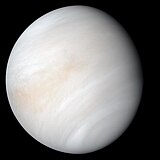ფაილი:PIA23791-Venus-RealAndEnhancedContrastViews-20200608 (cropped).jpg

ზჷმა გიწოთოლორაფაშ ბორჯის: 600 × 600 პიქსელი. შხვა გოფართაფა: 240 × 240 პიქსელი | 480 × 480 პიქსელი | 768 × 768 პიქსელი | 1,096 × 1,096 პიქსელი.
ორიგინალი ფაილი (1,096 × 1,096 პიქსელი, ფაილიშ ზჷმა: 30 კბ, MIME ტიპი: image/jpeg)
ფაილიშ ისტორია
ქიგუნჭირით რიცხვის/ბორჯის თიშო, ნამჷ-და ქოძირათ ფაილი თი რედაქციათ, ნამუ რედაქციას თი რიცხვის/ბორჯის რდუნ.
| რიცხუ/ბორჯი | ჭკუდი | გონზჷმილაფეფი | მახვარებუ | კომენტარი | |
|---|---|---|---|---|---|
| მიმალი | 03:40, 10 კვირკვე 2020 |  | 1,096 × 1,096 (30 კბ) | PhilipTerryGraham | File:PIA23791-Venus-RealAndEnhancedContrastViews-20200608.jpg cropped 51 % horizontally using CropTool with precise mode. |
ფაილიშ გჷმორინაფა
გეჸვენჯი ხასჷლა გჷმირინუანს თე ფაილს:
ფაილიშ გლობალური გჷმორინაფა
თე ფაილი გჷმირინუაფუ გეჸვენჯი ვიკეფს:
- ary.wikipedia.org-ს გჷმორინაფა
- arz.wikipedia.org-ს გჷმორინაფა
- ast.wikipedia.org-ს გჷმორინაფა
- as.wikipedia.org-ს გჷმორინაფა
- awa.wikipedia.org-ს გჷმორინაფა
- azb.wikipedia.org-ს გჷმორინაფა
- az.wikipedia.org-ს გჷმორინაფა
- ban.wikipedia.org-ს გჷმორინაფა
- bat-smg.wikipedia.org-ს გჷმორინაფა
- ba.wikipedia.org-ს გჷმორინაფა
- bcl.wikipedia.org-ს გჷმორინაფა
- be-tarask.wikipedia.org-ს გჷმორინაფა
- be.wikipedia.org-ს გჷმორინაფა
- bew.wikipedia.org-ს გჷმორინაფა
- bg.wikipedia.org-ს გჷმორინაფა
- bh.wikipedia.org-ს გჷმორინაფა
- bjn.wikipedia.org-ს გჷმორინაფა
- bn.wikipedia.org-ს გჷმორინაფა
- bo.wikipedia.org-ს გჷმორინაფა
- br.wikipedia.org-ს გჷმორინაფა
- bs.wikipedia.org-ს გჷმორინაფა
- btm.wikipedia.org-ს გჷმორინაფა
- bxr.wikipedia.org-ს გჷმორინაფა
- ca.wikipedia.org-ს გჷმორინაფა
- cdo.wikipedia.org-ს გჷმორინაფა
- ceb.wikipedia.org-ს გჷმორინაფა
- ce.wikipedia.org-ს გჷმორინაფა
- chr.wikipedia.org-ს გჷმორინაფა
- ckb.wikipedia.org-ს გჷმორინაფა
- co.wikipedia.org-ს გჷმორინაფა
- crh.wikipedia.org-ს გჷმორინაფა
- cr.wikipedia.org-ს გჷმორინაფა
- csb.wikipedia.org-ს გჷმორინაფა
- cs.wikipedia.org-ს გჷმორინაფა
- cu.wikipedia.org-ს გჷმორინაფა
- cv.wikipedia.org-ს გჷმორინაფა
- cy.wikipedia.org-ს გჷმორინაფა
- dag.wikipedia.org-ს გჷმორინაფა
- da.wikipedia.org-ს გჷმორინაფა
- de.wikipedia.org-ს გჷმორინაფა
- dga.wikipedia.org-ს გჷმორინაფა
- din.wikipedia.org-ს გჷმორინაფა
- diq.wikipedia.org-ს გჷმორინაფა
- dsb.wikipedia.org-ს გჷმორინაფა
- dty.wikipedia.org-ს გჷმორინაფა
- el.wikipedia.org-ს გჷმორინაფა
ქოძირით, თე ფაილიშ გლობალური გიმორინაფა.



